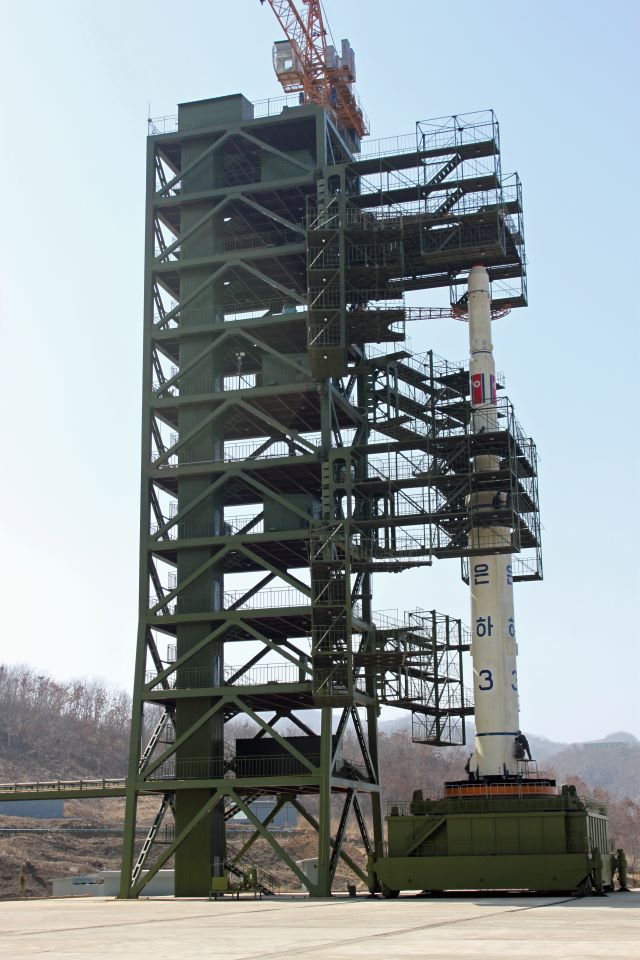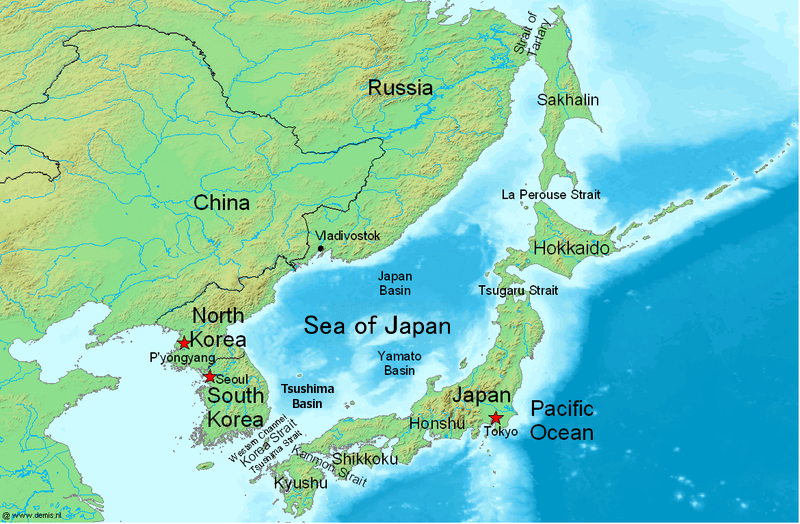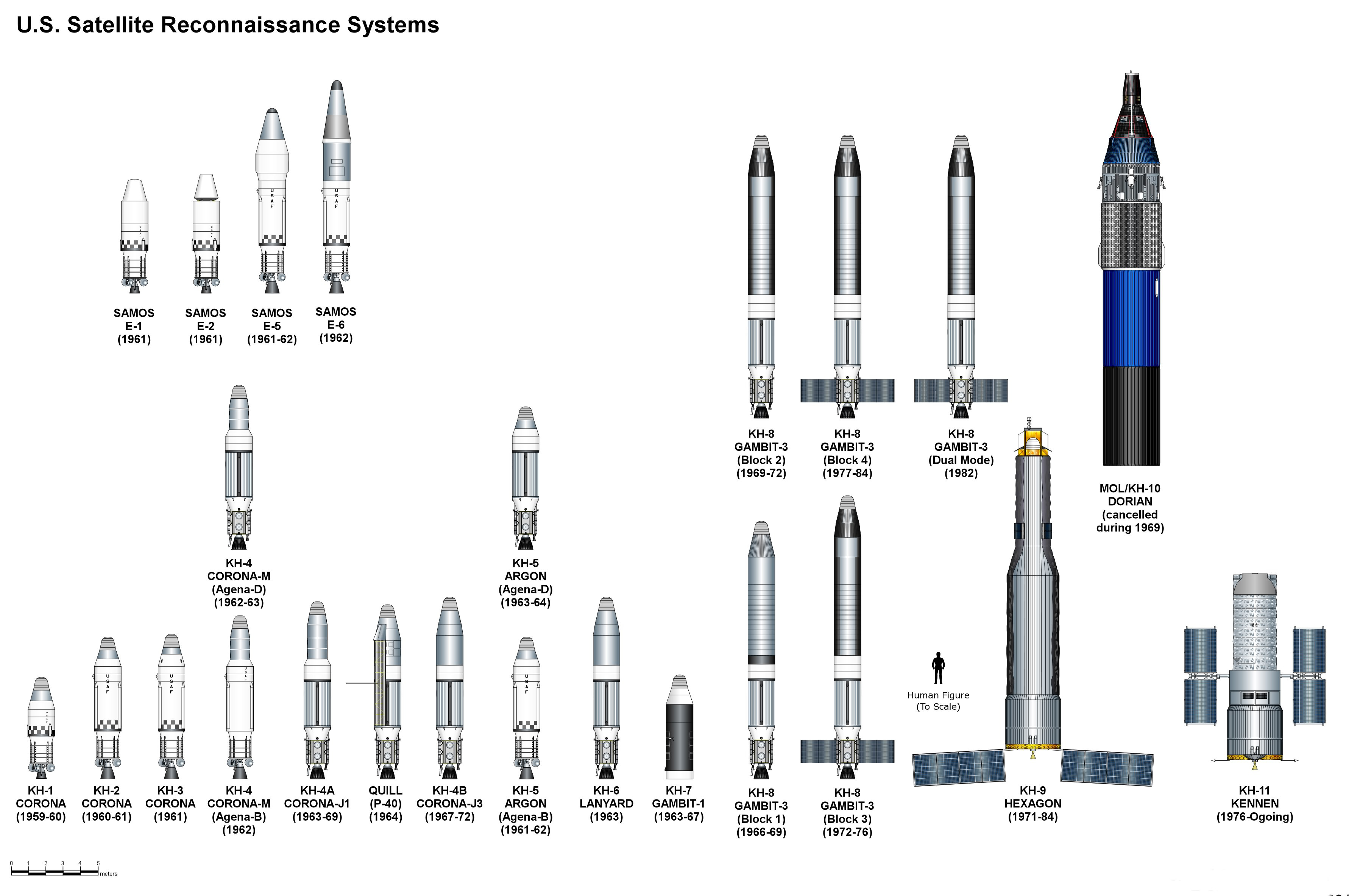|
Kwangmyŏngsŏng-1
Kwangmyŏngsŏng-1 (, Hanja: , meaning Bright Star 1) was a satellite allegedly launched by North Korea on 31 August 1998. While the North Korean government claimed that the launch was successful, no objects were ever tracked in orbit from the launch, and outside North Korea it is considered to have been a failure. It was the first satellite to be launched as part of the Kwangmyŏngsŏng program, and the first satellite that North Korea attempted to launch. It was launched from Musudan-ri using a Paektusan rocket, at 03:07 GMT on 31 August 1998, a few days before the 50th anniversary of North Korea's foundation. On 4 September, the Korean Central News Agency announced that the satellite had successfully been placed into low Earth orbit. The China National Space Administration was involved in the development of Kwangmyŏngsŏng-1, which had a 72-faced polyhedral shape, similar to Dong Fang Hong I, the first Chinese satellite. The mass of the satellite is unclear, with estima ... [...More Info...] [...Related Items...] OR: [Wikipedia] [Google] [Baidu] |
Kwangmyŏngsŏng Program
The Kwangmyŏngsŏng program was a class of experimental artificial satellite, satellites developed by North Korea. The name Kwangmyŏngsŏng ("bright star", "brilliant star" or "constellation" in Korean language, Korean) is from a poem written by Kim Il Sung. The first class of satellites built by North Korea, the program started in the mid-1980s. There have been five launches so far, of which two have been successful. Background According to North Korea Academy of Science's Academician Kwon Tong-hwa, the SLV was developed in the 1980s when late leader Kim Il Sung announced the decision to launch a North Korean satellite. The decision to send a North Korean satellite was precipitated by the successful launching of South Korea's first satellite, Uribyol-1, on 10 August 1992 and its second satellite, Uribyol 2, on 26 September 1993, both by a ESA, European Ariane 4 SLV. In a late-1993 meeting of the Workers' Party of Korea, Korean Workers' Party Central Committee, Kim Il Sung ex ... [...More Info...] [...Related Items...] OR: [Wikipedia] [Google] [Baidu] |
Korean Committee Of Space Technology
The Korean Committee of Space Technology (KCST; , Hanja: 朝鮮宇宙空間技術委員會) was the agency of the government of the Democratic People's Republic of Korea (North Korea) responsible for the country's space program. The agency was terminated and succeeded by the National Aerospace Development Administration in 2013 after the Law on Space Development was passed in the 7th session of the 12th Supreme People's Assembly. History Very little information on it is publicly available. It is known to have been founded sometime in the 1980s, and most likely is connected to the Artillery Guidance Bureau of the Korean People's Army. Operations The KCST was responsible for all operations concerning space exploration and construction of satellites. On 12 March 2009, North Korea signed the Outer Space Treaty and the Registration Convention, after a previous declaration of preparations for a new satellite launch. Facilities The KCST operated the Tonghae Satellite Launching Gro ... [...More Info...] [...Related Items...] OR: [Wikipedia] [Google] [Baidu] |
Musudan-ri
The Tonghae Satellite Launching Ground(동해위성발사장), also known as Musudan-ri (), is a rocket launching site in North Korea. Location It lies in southern Hwadae County, North Hamgyong Province, near Musu Dan, the cape marking the northern end of the East Korea Bay. The area was formerly known as Taep'o-dong (대포동) during the period when Korea was occupied by Japan, and the Taepodong rockets take their name from this. This single loose-surface road is susceptible to seasonal flooding. The site is 45 km northeast of port city of Kimchaek and 45 kilometers (28 miles) from the town of Kilju (길주읍). There is a small wharf located at the fishing village of Tongha-dong but can only accommodate vessels smaller than 40 meters in length. History By the early 1980s, North Korea needed a flight-test facility for its program to reverse-engineer and produce copies of the Scud-B which it acquired from the Soviet Union in the late 60s. Previously, North Korea use ... [...More Info...] [...Related Items...] OR: [Wikipedia] [Google] [Baidu] |
Paektusan (rocket)
Taepodong-1 () was the external designation given to a three-stage technology demonstrator developed by North Korea, a development step toward an intermediate-range ballistic missile. The missile was derived originally from the Scud rocket and was tested once in 1998 as a space launch vehicle. As a space launch vehicle, it was sometimes called the Paektusan 1. History On August 31, 1998, North Korea announced that they had used this rocket to launch their first satellite Kwangmyŏngsŏng-1 from a pad on the Musudan-ri peninsula. However, the satellite failed to achieve orbit; outside observers conjecture that the additional third stage either failed to fire or malfunctioned. This is contrary to official statements of the North Korean state media, which stated that the satellite achieved orbit about 5 minutes after launch. On this single launch, the main two-stage booster flew for 1,646 km without any significant problems. The rocket was launched eastward, passing over ... [...More Info...] [...Related Items...] OR: [Wikipedia] [Google] [Baidu] |
Tonghae Satellite Launching Ground
The Tonghae Satellite Launching Ground(동해위성발사장), also known as Musudan-ri (), is a rocket launching site in North Korea. Location It lies in southern Hwadae County, North Hamgyong Province, near Musu Dan, the cape marking the northern end of the East Korea Bay. The area was formerly known as Taep'o-dong (대포동) during the period when Korea was occupied by Japan, and the Taepodong rockets take their name from this. This single loose-surface road is susceptible to seasonal flooding. The site is 45 km northeast of port city of Kimchaek and 45 kilometers (28 miles) from the town of Kilju (길주읍). There is a small wharf located at the fishing village of Tongha-dong but can only accommodate vessels smaller than 40 meters in length. History By the early 1980s, North Korea needed a flight-test facility for its program to reverse-engineer and produce copies of the Scud-B which it acquired from the Soviet Union in the late 60s. Previously, North Korea u ... [...More Info...] [...Related Items...] OR: [Wikipedia] [Google] [Baidu] |
Sea Of Japan
The Sea of Japan is the marginal sea between the Japanese archipelago, Sakhalin, the Korean Peninsula, and the mainland of the Russian Far East. The Japanese archipelago separates the sea from the Pacific Ocean. Like the Mediterranean Sea, it has almost no tides due to its nearly complete enclosure from the Pacific Ocean. This isolation also affects faunal diversity and salinity, both of which are lower than in the open ocean. The sea has no large islands, bays or capes. Its water balance is mostly determined by the inflow and outflow through the straits connecting it to the neighboring seas and the Pacific Ocean. Few rivers discharge into the sea and their total contribution to the water exchange is within 1%. The seawater has an elevated concentration of Oxygen saturation, dissolved oxygen that results in high biological productivity. Therefore, fishing is the dominant economic activity in the region. The intensity of shipments across the sea has been moderate owing to politi ... [...More Info...] [...Related Items...] OR: [Wikipedia] [Google] [Baidu] |
Korean People's Navy
The Korean People's Army Navy (KPANF; ) or the Korean People's Navy (KPN) is the Navy, naval component of the Korean People's Army, the North Korean armed forces. There are some 780 vessels including 70 midget submarines (including the Yono-class submarine and Sang-O-class submarine), 20 Romeo-class submarines, and about 140 air cushioned landing craft. The North Korean navy is considered a brown water navy, brown-water (or riverine) navy with limited Green-water navy, green water capabilities and operates mainly within the 50 kilometer exclusion zone. The fleet consists of east and west coast squadrons, which cannot support each other in the event of war with an adversary such as South Korea. The limited range of its vessels means that, even in peacetime, it is quite challenging for a ship on one coast to visit the other coast. By far North Korea operates only four confirmed green water vessels with plans of building at least two more. In theory, the Nampo-class corvette, ... [...More Info...] [...Related Items...] OR: [Wikipedia] [Google] [Baidu] |
Telstar 1
Telstar 1 is a defunct communications satellite launched by NASA on July 10, 1962. One of the earliest communications satellites, it was the first satellite to achieve live transmission of broadcast television images between the United States and Europe. Telstar 1 remained active for only 7 months before it prematurely failed due to Starfish Prime, a high-altitude nuclear test conducted by the United States. Although the satellite is no longer operational, it remains in Earth orbit. History The idea of relaying information from one point on Earth to another by means of satellites was not new. As early as October 1945, the visionary Arthur C. Clarke published an article talking about it in the specialized magazine ''Wireless World''. His idea was to enable communication between two points which were prevented from direct radio communication by the curve of the Earth, by relaying the information by radio through an orbiting satellite. During the Cold War, the shock caused by ... [...More Info...] [...Related Items...] OR: [Wikipedia] [Google] [Baidu] |
Reconnaissance Satellite
A reconnaissance satellite or intelligence satellite (commonly, although unofficially, referred to as a spy satellite) is an Earth observation satellite or communications satellite deployed for military or intelligence applications. The first generation type (i.e., Corona and Zenit) took photographs, then ejected canisters of photographic film which would descend back down into Earth's atmosphere. Corona capsules were retrieved in mid-air as they floated down on parachutes. Later, spacecraft had digital imaging systems and downloaded the images via encrypted radio links. In the United States, most information available about reconnaissance satellites is on programs that existed up to 1972, as this information has been declassified due to its age. Some information about programs before that time is still classified information, and a small amount of information is available on subsequent missions. A few up-to-date reconnaissance satellite images have been declassifi ... [...More Info...] [...Related Items...] OR: [Wikipedia] [Google] [Baidu] |
Dangun
Dangun or Tangun (; ), also known as Dangun Wanggeom (; ), was the legendary founder and first king of Gojoseon, the first Korean kingdom. He founded the first kingdom around the northern part of the Korean Peninsula. He is said to be the "grandson of heaven", "son of a bear", and to have founded the first kingdom in 24th century BC#Mythology, 2333 BC. The earliest recorded version of the Dangun legend appears in the 13th-century ''Samguk yusa'', which purportedly cites Korea's lost historical record, ''Gogi'' (; 'Ancient Record') and China's ''Book of Wei''. However, there is no records related to Dangun in the current surviving version of the ''Book of Wei''. Koreans celebrate Dangun's founding of Gojoseon, Korea's first dynasty, on 3 October as a national holiday known as National Foundation Day (Korea), National Foundation Day (''Gaecheonjeol''). It is a religious anniversary started by Daejongism (), worshipping Dangun. Many Korean historians regard Dangun and Tengri as ... [...More Info...] [...Related Items...] OR: [Wikipedia] [Google] [Baidu] |
People's Republic Of China
China, officially the People's Republic of China (PRC), is a country in East Asia. With population of China, a population exceeding 1.4 billion, it is the list of countries by population (United Nations), second-most populous country after India, representing 17.4% of the world population. China spans the equivalent of five time zones and Borders of China, borders fourteen countries by land across an area of nearly , making it the list of countries and dependencies by area, third-largest country by land area. The country is divided into 33 Province-level divisions of China, province-level divisions: 22 provinces of China, provinces, 5 autonomous regions of China, autonomous regions, 4 direct-administered municipalities of China, municipalities, and 2 semi-autonomous special administrative regions. Beijing is the country's capital, while Shanghai is List of cities in China by population, its most populous city by urban area and largest financial center. Considered one of six ... [...More Info...] [...Related Items...] OR: [Wikipedia] [Google] [Baidu] |
Mount Paektu
Paektu Mountain or Baekdu Mountain () is an active stratovolcano on the Chinese–North Korean border. In China, it is known as Changbai Mountain (). At , it is the tallest mountain in North Korea and Northeast China and the tallest mountain of the Baekdu-daegan and Changbai mountain ranges. The highest peak, called Janggun Peak, belongs to North Korea. The mountain notably has a caldera that contains a large crater lake called Heaven Lake, and is also the source of the Songhua, Tumen, and Yalu rivers. Korean and Manchu people assign a mythical quality to the mountain and its lake, and consider the mountain to be their ancestral homeland. The mountain's caldera was formed by an eruption in 946 that released about of tephra. The eruption was among the largest and most powerful eruptions on Earth in the last 5,000 years. The volcano last erupted in 1903, and is expected to erupt around every hundred years. In the 2010s, concerns over an upcoming eruption prompted sev ... [...More Info...] [...Related Items...] OR: [Wikipedia] [Google] [Baidu] |







